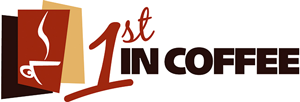The Bean Counters
 This is not about chartered accountancy or the standard bookkeeping practices employed therein. It is about coffee. In a “competing” blog entry entitled “Coffee!!!” By Mason Currey
This is not about chartered accountancy or the standard bookkeeping practices employed therein. It is about coffee. In a “competing” blog entry entitled “Coffee!!!” By Mason Currey
(and also found all around the Internet in some 118,000 thousand other places according to Google),
Beethoven had a cup of coffee for his breakfast each morning. To make it he would count out 60 coffee beans. As a fellow musician, although not up to Ludwig’s standards of creativity, I decided to investigate. Yes, I counted out 60 coffee beans… twice. The first time was from a random scoop of beans. The second time I choose only “full size” beans (no peaberries). I found a mass of 7.2 and 8 grams respectively.
Next step was to research what the recommended ratio of coffee to water should be. I found the following recommendations:
30 grams : 16 ounces (63 grams:liter)
1.63 grams : 1 ounce (55grams:liter)
7 grams : 125ml (56 grams:liter)
30 grams : 420 grams of water (71 grams:liter)
65 grams : liter (self explanatory)
After going through a few pages like that I felt like searching for how many inches in an hour. But as you can see, there is a range that is generally agreed upon that if you are making coffee using one liter of water (which is approximately 33.81402 liquid ounces, if you care) you should use between 55 and 70 grams of coffee. That is scientific accuracy that an art major can appreciate because it decreases the science and increases the art. But the science gets more confusing.
Beethoven was not making a liter of coffee, he was making a cup of coffee. The volume of his cup was what? Students? Anyone? It’s a trick question because I don’t know the answer, and even if I had access to his actual cup as authenticated by the Franklin Mint, we don’t know how much water he used. He could have been using a six ounce cup which he filled to 80% of its capacity. Anyone? That would be approximately 0.1420 of a liter. ENOUGH ALREADY with this!
We could keep going, but it is becoming less humorous and more pointless as it continues on. There are a few useful coffee bean counting tips that can assist you in making a better cup of coffee, and they can be simplified:
Weighing your coffee is a better method than using a scoop. Weight is more consistent than volume. The roast level and the age of the coffee affect its density (pound of Styrofoam vs. a pound of lead). So weigh the beans before grinding (beans will likely be easier to handle than ground coffee).
Measure the water accurately using a good measuring cup. Even better, weigh the water. The metric system was created as a true system. 1cc = 1ml = 1gram of water.
How much coffee to how much water? Begin with a ratio of 6 grams of coffee : 100grams of water, or about 1:17 in weight (yes, I could have started this article with that statement, and no, I do not get paid by the word).
The art is that if the coffee is thin, or tasteless, or bland to you, use more coffee, or a finer grind, or both. If the coffee is overpowering and “in your face,” causing you to hold onto the edge of the table like it’s a safety bar on a roller coaster, use less coffee or grind a bit more coarse, or both. And once again, yes, I could also have started with that statement. The point is that coffee is food, and the food you like the best is the food you like the best. Whether you like a cup that looks like thin broth or coffee that pours like molasses, taste is subjective.
The science of this is that unless you control the variables as closely as is reasonably possible, when you get a great cup of coffee, how will you be able to reproduce it unless you know how much coffee and how much water you used?
So we can guess that Beethoven’s 60 beans to an 8 ounce cup of coffee, was a ratio of 1:26 (beans to water by mass). If it was 6 ounces of water, the ratio would be 1:22 Compared to the recommended ratio of 1:17, his coffee actually seems a little weak compared to today’s standards. Maybe he liked it that way. He was an artist, after all.

No Comment